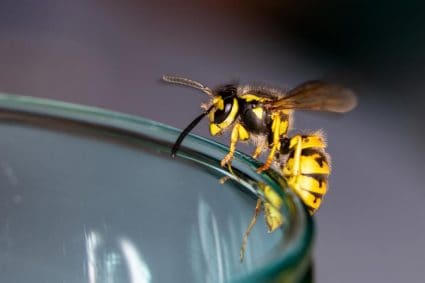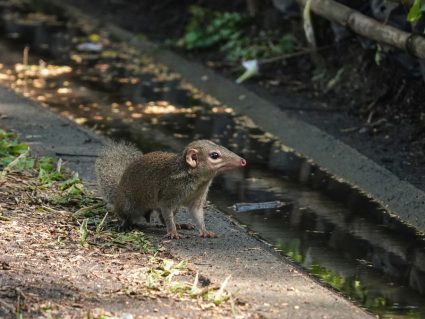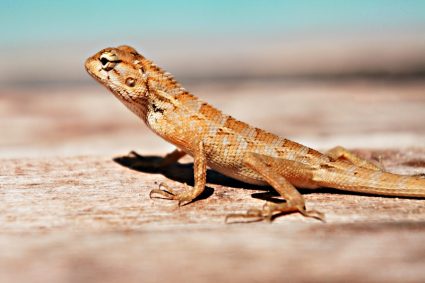
Lizards are fascinating creatures, but finding them in your home can be a surprise, and you may wonder how they got there in the first place. Baby lizards, in particular, can easily find their way into houses due to their small size and agile bodies. This article aims to provide a comprehensive guide on how baby lizards get into houses, the risks or concerns associated with having them indoors, and effective prevention and removal methods.
Baby lizards typically get into houses through small openings, cracks, or gaps around windows, doors, and ventilation systems. They are attracted to houses for food, water, shelter, and warmth. Common species that invade homes include the common house gecko and the Carolina anole. You can prevent them from entering by sealing entry points, using natural repellents, eliminating their food sources, and maintaining your yard.
Entry Points for Baby Lizards
Baby lizards typically gain entry into houses through small openings, cracks, and gaps in the building’s structure. They can squeeze through spaces around windows, doors, and ventilation systems. Lizards may also enter homes through open windows or torn screens. They are attracted to houses in search of food, water, and warmth.
Common Species That Invade Homes
The most common species of baby lizards that invade homes are the common house gecko (Hemidactylus spp.) and the Carolina anole (Anolis carolinensis), also known as the green anole. These lizards are found throughout the United States, particularly in warmer climates. They play an essential role in the ecosystem by controlling insect populations. Other species that may occasionally find their way into homes include the oriental garden lizard (Calotes versicolor) and the brown anole (Anolis sagrei).
What Attracts Baby Lizards to Homes?
There are several factors that may attract baby lizards to homes:
- Food sources: Lizards feed on insects such as flies, mosquitoes, ants, and beetles. A home with an insect infestation is likely to attract lizards.
- Shelter: Lizards seek shelter in warm, dark, and hidden spots. Homes provide ideal hiding places, such as gaps in walls, crevices, and spaces behind furniture or appliances.
- Water: Lizards are attracted to water sources, both inside and outside the home. Pet bowls, birdbaths, or even leaking pipes and fixtures can provide enough water for lizards to survive.
- Warmth: Lizards are ectothermic creatures, meaning they rely on external sources of heat to regulate their body temperature. They are naturally attracted to warm areas, and homes with warm and humid environments can be particularly appealing to them.
Signs of Baby Lizards in the House
Several signs indicate the presence of baby lizards in your house:
- Sightings: Seeing baby lizards in your home is the most obvious sign.
- Droppings: Lizard droppings are small, dark, and pellet-like.
- Shed skin: Lizards shed their skin as they grow. If you find small pieces of shed skin in your house, it could indicate the presence of baby lizards.
- Eggs or eggshells: Some lizard species lay eggs, while others give birth to live young. If you find eggs or eggshells in your home, it could be a sign that baby lizards are present or will be soon.
- Sounds: Baby lizards may make small scratching or rustling noises as they move around your home.
Risks or Concerns Associated with Baby Lizards in the House
Having baby lizards in the house can pose several risks and concerns. The primary concern is the potential transmission of Salmonella bacteria, which most reptiles carry in their intestines, mouths, and feces. Salmonellosis in humans can cause flu-like symptoms and may even be life-threatening, particularly for children younger than 5 years old, adults 65 and older, and people with weakened immune systems. Lizard droppings can also stain fabric, curtains, and carpets.
How to Prevent Baby Lizards from Entering Your Home
To prevent baby lizards from entering your home, you can follow these steps:
- Identify and seal entry points: Find out how lizards are accessing your home and seal those entry points.
- Deploy natural repellents: Use natural repellents like homemade pepper spray, peppermint oil, or eucalyptus oil to keep lizards away.
- Eliminate their food sources: Keep trash and compost secured, clean up food scraps rapidly, and maintain cleanliness in your home, garbage disposal, and kitchen sink.
- Maintain your yard: Keep wood and rock piles away from your home and trim vegetation at least 12 inches away from your house.
Effective Methods for Removing Baby Lizards from the House
To effectively remove baby lizards from your house, you can use a combination of methods such as pepper spray, onions and garlic, naphthalene balls, eggshells, essential oils, and reducing room temperature. You can also seal cracks and gaps in doors, windows, and walls to prevent lizards from entering your home.
In conclusion, while baby lizards can easily find their way into homes, there are several effective prevention and removal methods you can employ to maintain a lizard-free environment. Always remember to handle these creatures gently and humanely if you encounter them in your home.
Frequently Asked Questions
Are baby lizards dangerous to humans?
Generally, baby lizards are not dangerous to humans. They are not venomous and are unlikely to bite. However, they can carry Salmonella bacteria, which can cause illness if humans come into contact with lizard feces.
What time of the year are baby lizards most likely to enter homes?
Baby lizards are most likely to enter homes during warmer months, as they are attracted to the warmth and food sources available in homes. However, in regions with mild winters, they may be found indoors year-round.
Can I use pesticides to get rid of baby lizards in my house?
It is not recommended to use pesticides to get rid of baby lizards as they can be harmful to both the lizards and humans. Instead, consider using natural repellents and sealing entry points to prevent them from entering your home.
How long can baby lizards survive without food or water?
Baby lizards can survive for a few weeks without food, but they require regular access to water. They can get water from their food, dew, or small puddles.
What should I do if I find a baby lizard in my house?
If you find a baby lizard in your house, you can gently capture it and release it outdoors. Consider using gloves to avoid direct contact. Also, identify and seal any potential entry points to prevent future invasions.










